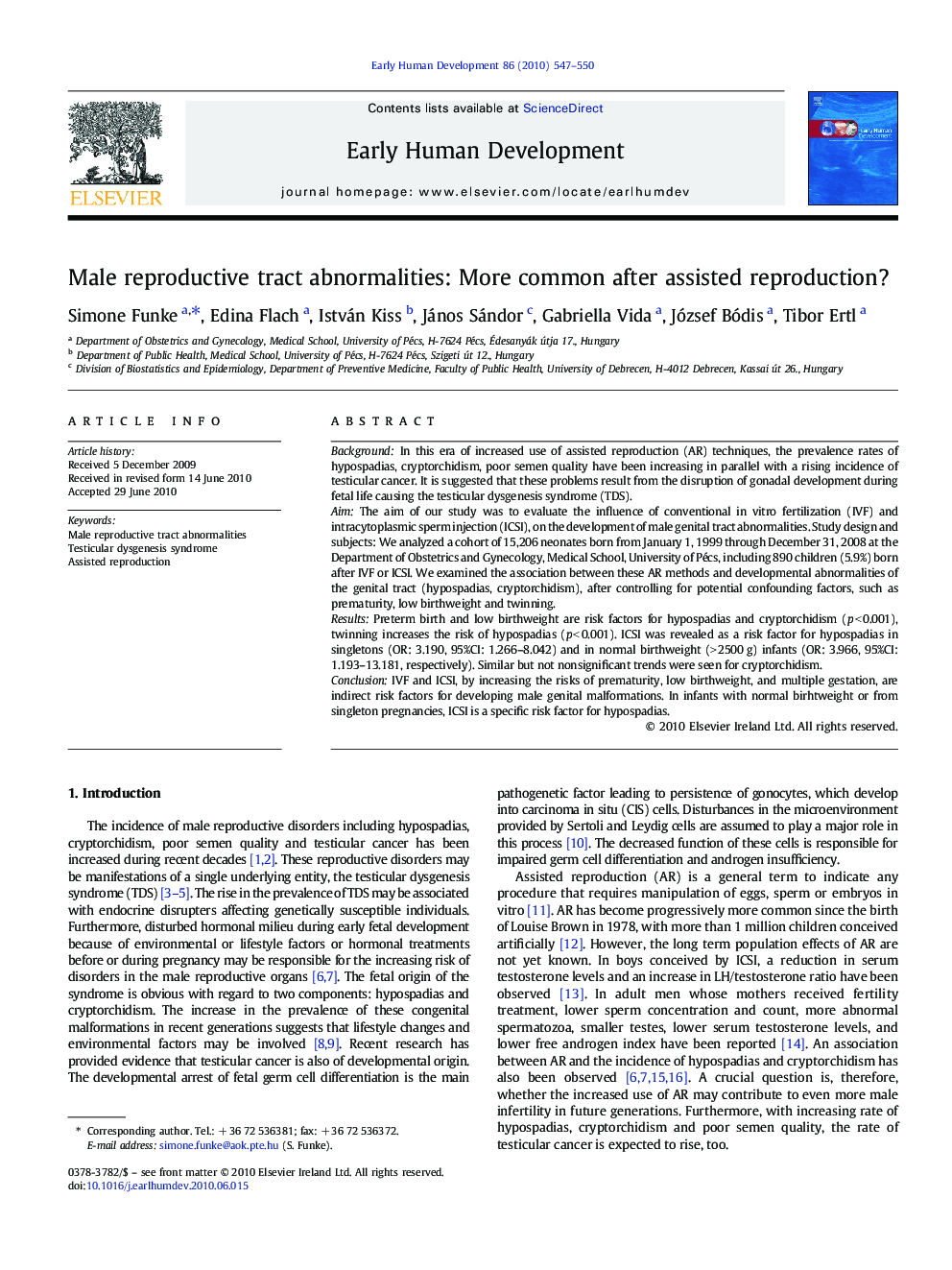| Article ID | Journal | Published Year | Pages | File Type |
|---|---|---|---|---|
| 6172220 | Early Human Development | 2010 | 4 Pages |
BackgroundIn this era of increased use of assisted reproduction (AR) techniques, the prevalence rates of hypospadias, cryptorchidism, poor semen quality have been increasing in parallel with a rising incidence of testicular cancer. It is suggested that these problems result from the disruption of gonadal development during fetal life causing the testicular dysgenesis syndrome (TDS).AimThe aim of our study was to evaluate the influence of conventional in vitro fertilization (IVF) and intracytoplasmic sperm injection (ICSI), on the development of male genital tract abnormalities. Study design and subjects: We analyzed a cohort of 15,206 neonates born from January 1, 1999 through December 31, 2008 at the Department of Obstetrics and Gynecology, Medical School, University of Pécs, including 890 children (5.9%) born after IVF or ICSI. We examined the association between these AR methods and developmental abnormalities of the genital tract (hypospadias, cryptorchidism), after controlling for potential confounding factors, such as prematurity, low birthweight and twinning.ResultsPreterm birth and low birthweight are risk factors for hypospadias and cryptorchidism (p < 0.001), twinning increases the risk of hypospadias (p < 0.001). ICSI was revealed as a risk factor for hypospadias in singletons (OR: 3.190, 95%CI: 1.266-8.042) and in normal birthweight (> 2500 g) infants (OR: 3.966, 95%CI: 1.193-13.181, respectively). Similar but not nonsignificant trends were seen for cryptorchidism.ConclusionIVF and ICSI, by increasing the risks of prematurity, low birthweight, and multiple gestation, are indirect risk factors for developing male genital malformations. In infants with normal birhtweight or from singleton pregnancies, ICSI is a specific risk factor for hypospadias.
